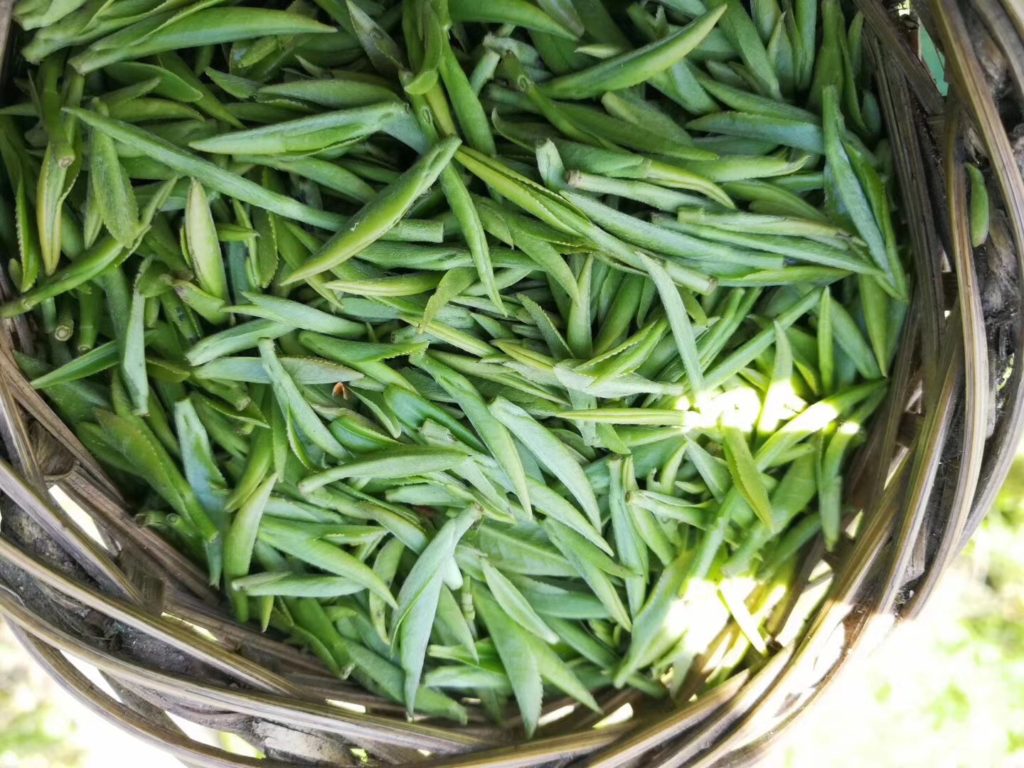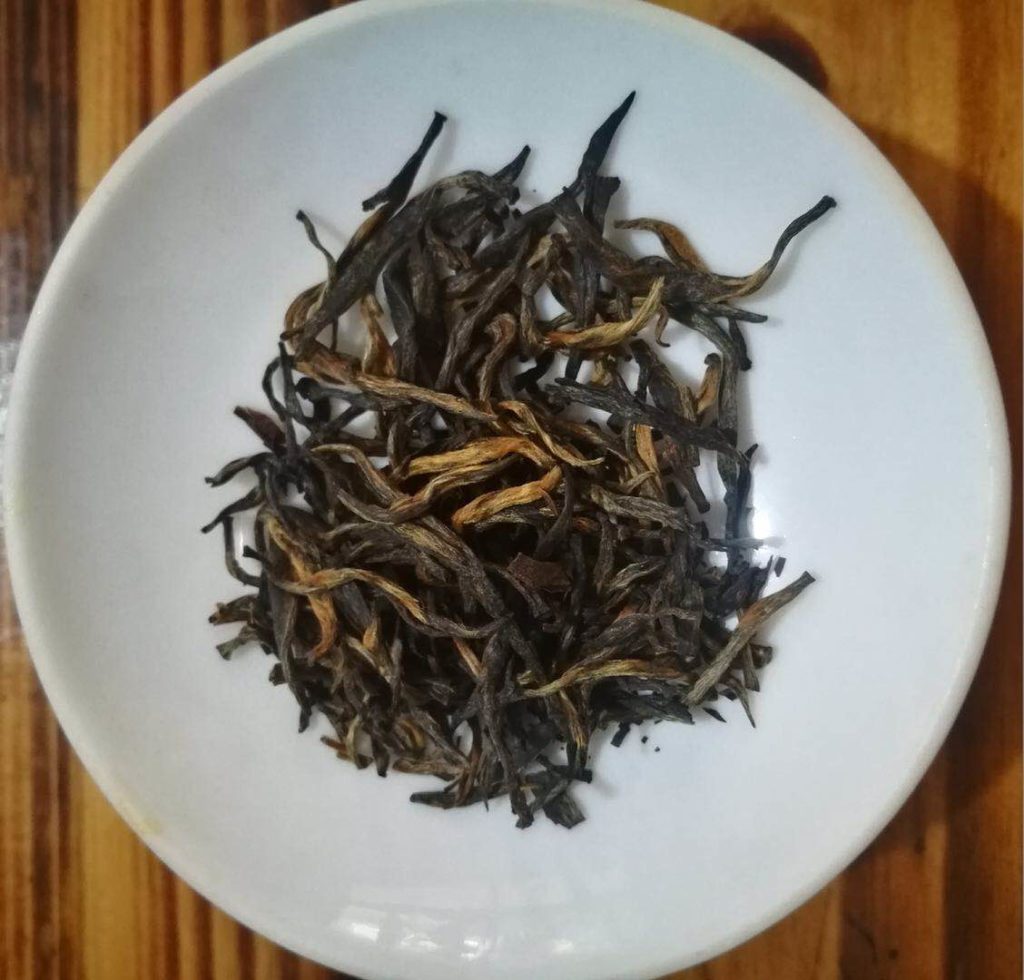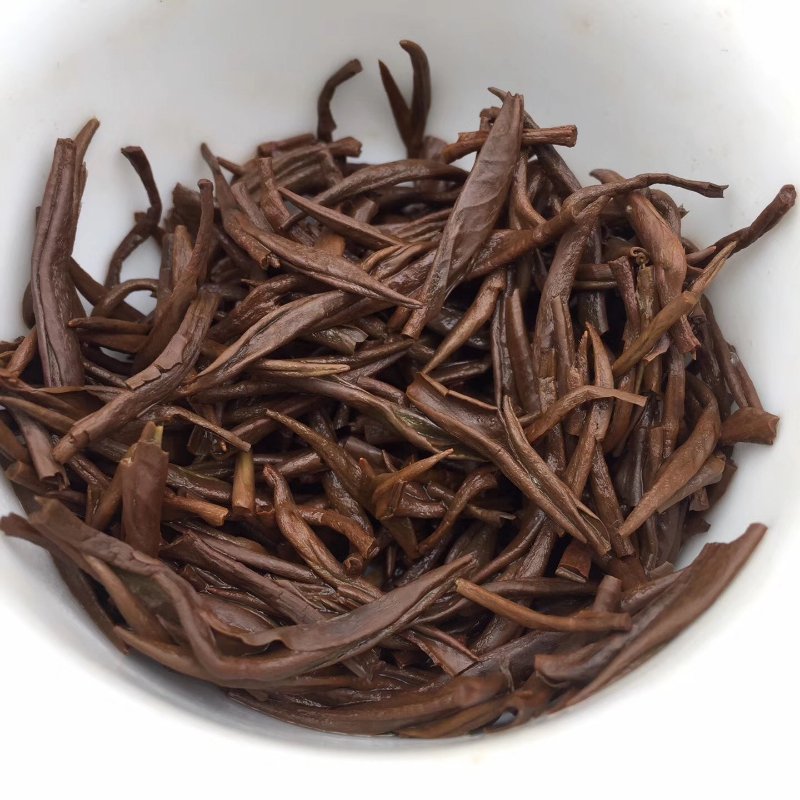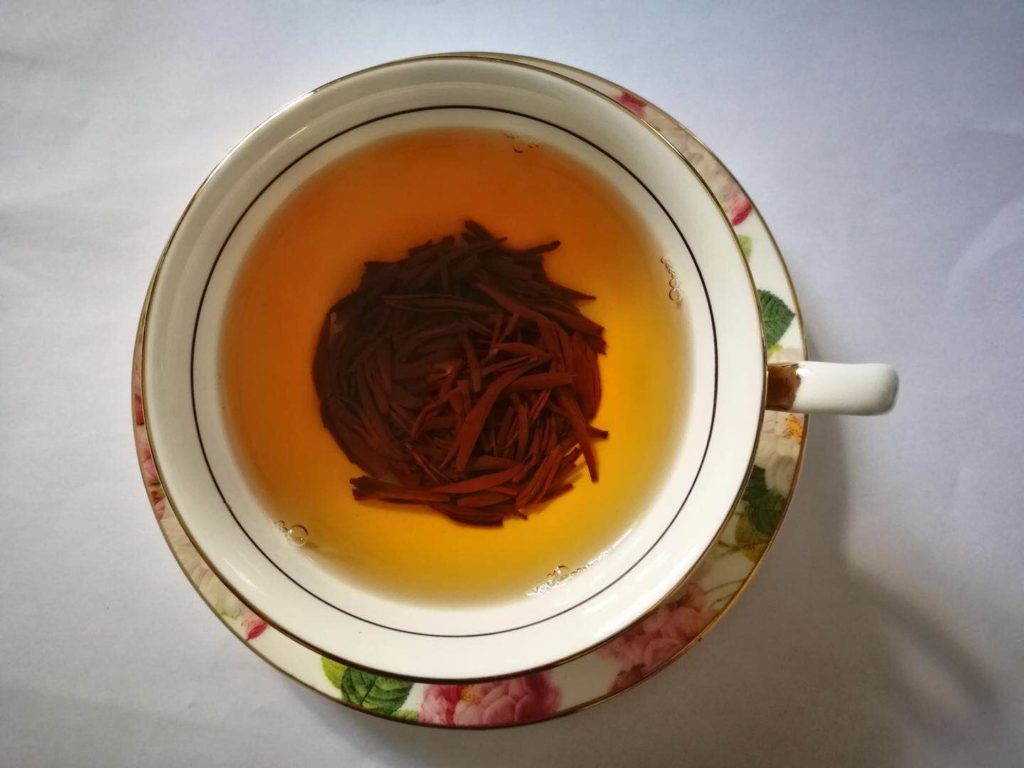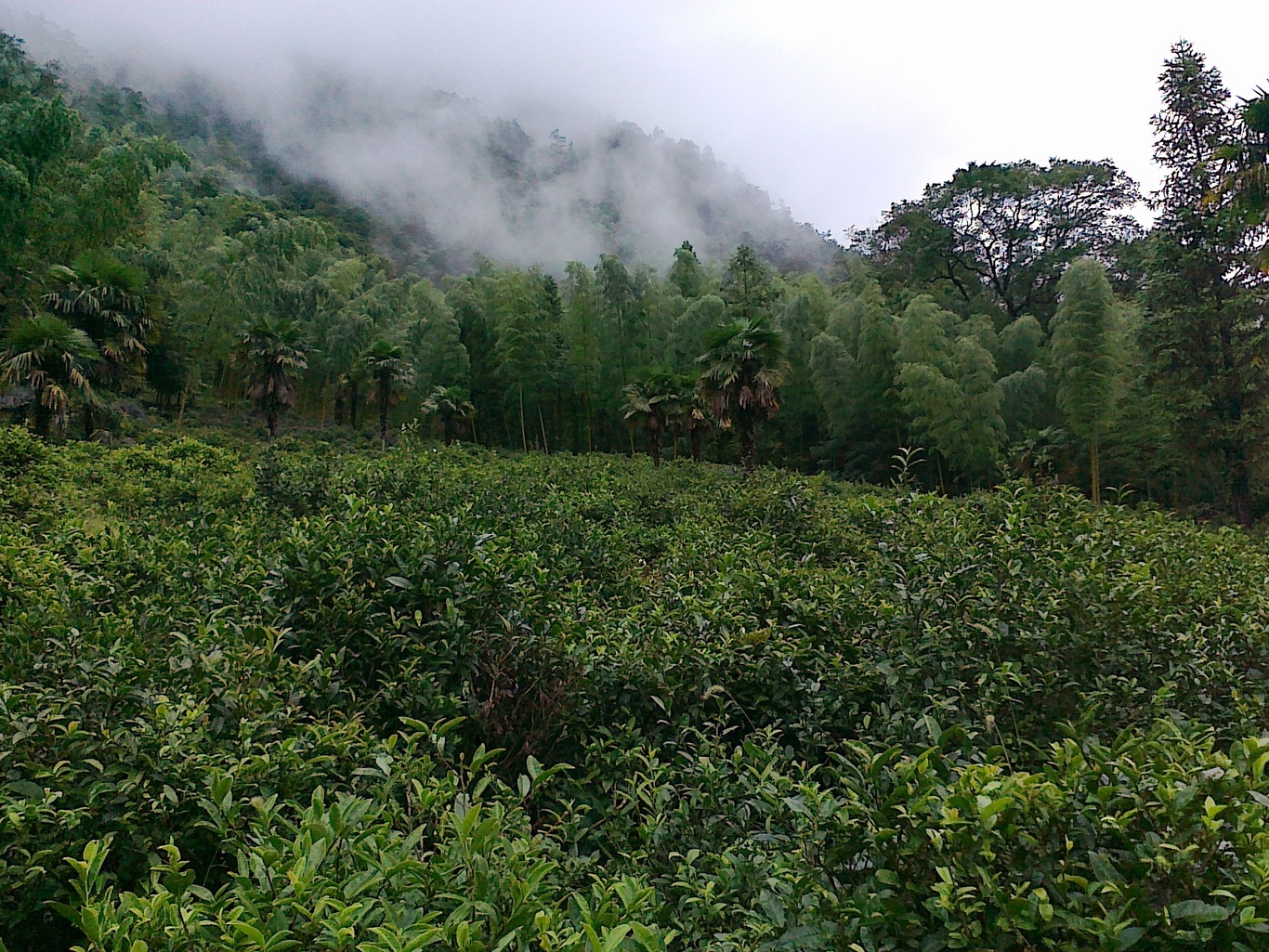
Red teas in China are experiencing a Renaissance. One of the most sought after of the high-end red teas is Jin Jun Mei – a fully oxidized tea created in 2006. It is made wholly of tea buds picked in early spring and processed through a combination of traditional and innovative techniques that mimic the production process of Lapsang Souchong. Just one gram of Jin Jun Mei requires 108 tea buds, which takes roughly half an hour to hand-pluck. The market price can be anywhere between $6,000 per kilo to more than $16,000 per kilo ($450 per ounce, $7,200 a pound).
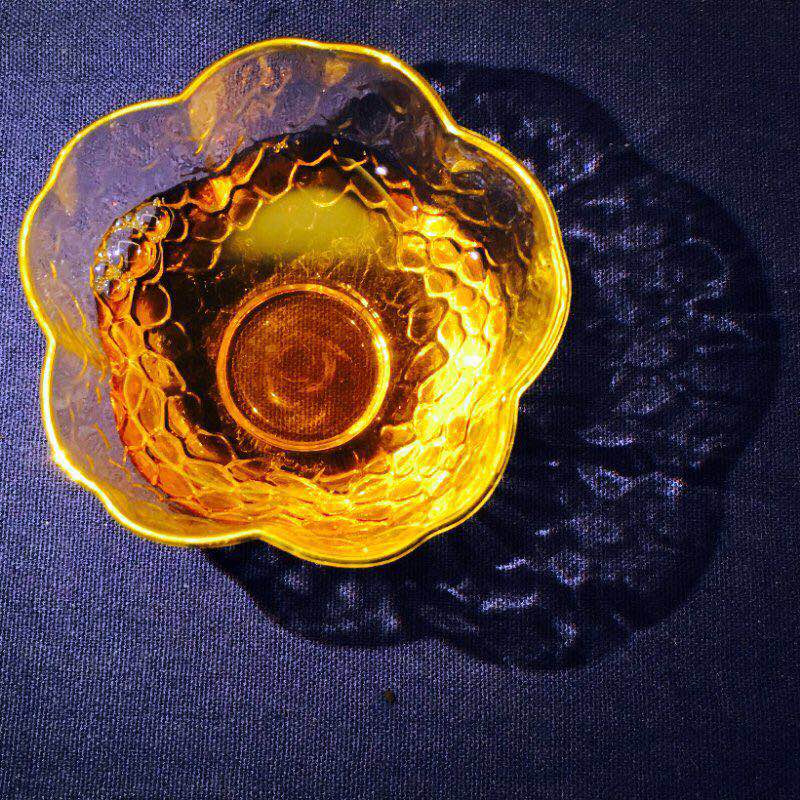

Authentic Jin Jun Mei is made from the Cai Cha varietal that grows untamed on one of the peak mountains of Tong Mu village in China’s Mount Wuyi region at 4,500 feet (1,400 meters) above sea level. It is an area that receives the cold winds from the north, has short days of sunlight due to the surrounding tall bamboo forests, and has a high mineral-content rocky soil.
Foreigners are stopped at the checkpoint leading to Tong Mu village after horticulturalists tried to steal some cuttings from the area which is famed for its beauty.
In dry form, Jin Jun Mei leaves are small, dense and twisted, with a black charcoal color and golden tips. The dry leaves smell of wild roses and bush honey. Jin Jun Mei made elsewhere usually consists of larger and lighter buds and are yellow. They lack the fragrance of wild rose and have a caramel scent rather than the scent of bush honey.
The tea can be steeped at up to 100 Celsius, with a proportion of 3 grams of tea leaves to 100 milliliters of water. The 3 grams of Jin Jun Mei I consumed cost around $7. If the tea does not handle boiling water, then that is an indication it is not authentic.
ACKNOWLEDGEMENTS: Thanks to Zheng Mu Rong of the Tea Science School of Wuyi University for the Jin Jun Mei sample and the Jin Jun Mei photographs.
Tea Market
Get More Value from Your Tea: BRU Maker One
+41794574278
Jacque's Organics
(647) 804-7263
